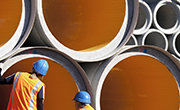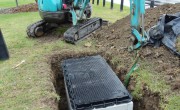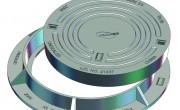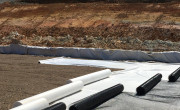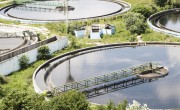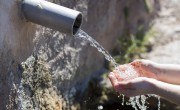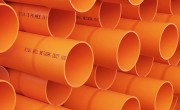Topic(s):
A Humes Sand Filter unit is playing key role in controlling the quality of water discharging into Waiuku (South Auckland) stream.
When the owner of the Waiuku Mitre 10 approached Franklin District Council seeking approval to develop his site, concerns were raised regarding the quality of stormwater that would run off the site and into an open stormwater drain discharging into the nearby Waiuku Stream.
Prior to development the Mitre 10 yard was unsealed and contained various stockpiled building materials including treated timbers. The proposed building works included sealing the yard and extending the building, both of which would result in larger volumes of stormwater running off the site at a faster rate. Runoff from hard stand areas such as that at the Mitre 10 yard usually contain high concentrations of fine sediments, greases and oils from vehicles that are harmful to the receiving environment. In addition harmful preservatives leaching out of treated timbers stored in the yard were also a concern.
To meet its obligations for managing the quality of stormwater runoff, Mitre 10 elected to install treatment devices in the yard. A Humes HSF1500-B2050 sand filter was chosen for installation downstream from a litter and coarse sediments trap. The Humes sand filter, sized to treat an area of 1500m2, meets the requirements of Auckland Regional Councils Technical Publication 10 (TP10), a document that prescribes acceptable stormwater treatment devices for application within the Auckland Region.
Installation was completed within a day without incident. Final feedback from the client is that the unit is operational and functioning well.
Sand filters are usually designed to treat stormwater runoff volume equal to 1/3 of a 2-year, 24 hour rainfall. Stormwater is received by the sedimentation bay in which coarse sediments drop out and litter items are entrained. Water then flows in sheet form through slots in the baffles wall, across the filter bed. Once treated by passing through the filter bed the clean water is discharged into the receiving stormwater network. Rainfall in excess of the design water quality volume bypasses the filtration chamber in the sand filter via a high level outlet at the end of the sedimentation chamber. This ensures that velocities are limited within the sand filter and re-suspension of captured contaminants is minimized.
Maintenance frequency of the sand filter unit will depend on the particular site conditions, however, under normal circumstances a clean out of the sedimentation chamber would be anticipated every 2- 10 years. Maintenance of the filtration chamber should occur more frequently, every 6 – 12 months.
Humes’ range of water quality treatment devices plays a key role in providing solutions in environmentally sensitive areas. With Humes’ commitment to developing and obtaining technology in water quality, rest assured there are more solutions in the pipeline.
Project Summary
- Priority pollutants – fine sediments, hydrocarbon, timber preservatives;
- Stormwater sub-catchment of 1500 m²;
- Flat catchment area.
